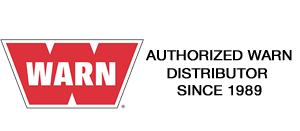Winch Rigging Lines
Posted by Monster Web on
A winch is an extremely handy tool when it comes to being prepared for any off-roading or rescue situation. When most people think of a winch and pulley system, something like a basic cable and hook comes to mind. At its core, a winch system is a pulley, line, and attachment. However, the techniques behind the rigging system are as varied as the types of objects that can be pulled.
Slope, object, weight, and angle are all important aspects to consider when setting up a pulley and winch system. However, it is a MUST to have a straight line from the winch to the element that is being pulled. If you need to change the direction of the pull, a snatch block allows a change in pulling direction.
Snatch Block
A snatch block increases the pulling power of your winch, while allowing a wider range of pulls. It allows one to easily change directions when pulling an object, while still retaining pulling strength. A snatch block also allows the use of multiple lines to be integrated in order to greatly increase pulling power.
Single Rigging Line
A single pulling line is one of the most commonly used rigging systems. Again, it is also one that comes to mind when a winch system comes to mind. It consists of one line attached to a single point for leverage. However, if you need to increase pulling power, there are variations and tools that can be applied.
Double Rigging Line
A double line rigging system utilizes a snatch block as a way to feed the line through and double back and hook on to the tow frame. The line is fed through the snatch block, with equal amounts of line from the winch to the snatch block, and the snatch block to the tow hook/frame.
Triple Rigging Line
A triple line institutes the use of two snatch blocks and two separate rigging points. The towing line is run through the first snatch block, and led back towards the winch. Instead of connecting the line via tow hook to the frame, the line is fed through another snatch block. The “second” line is secured via a screw pin shackle as close as possible to the winch. The final line is run to the secondary anchor point and secured. Thus, three “lines” are created to produce an extremely powerful and efficient rigging system.
Each rigging line and variation has their own benefits for specific situations. No matter what situation in which you are using a winch rigging system, always use extreme caution, safety, and most importantly, the proper gear. You can find winch accessory kits that contain all the minimum pieces you may need to properly construct a rigging system.
Share this post
- Tags: double rigging line, double winch line, rigging lines, single rigging line, single winch line, triple rigging line, triple winch line, warn rigging lines, warn winch distributors, warn winches, winch systems, winching rig systems

